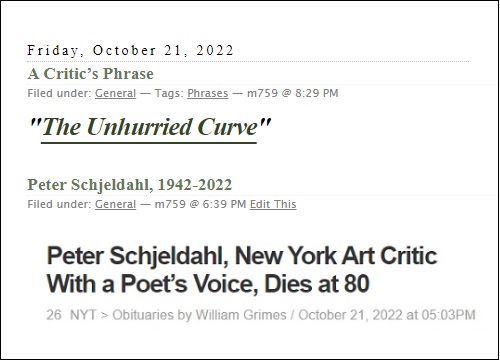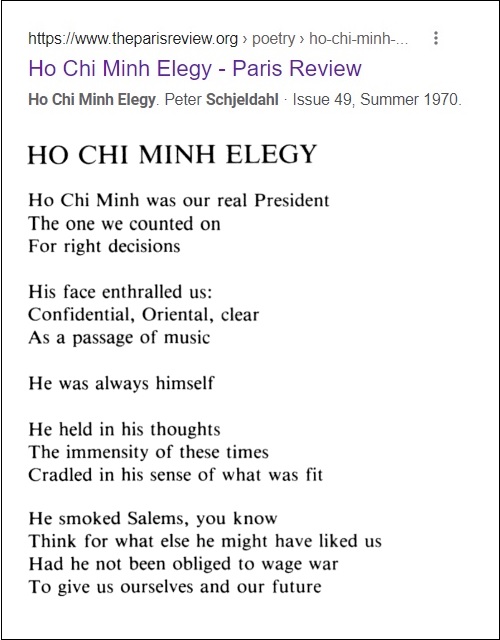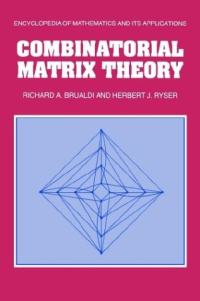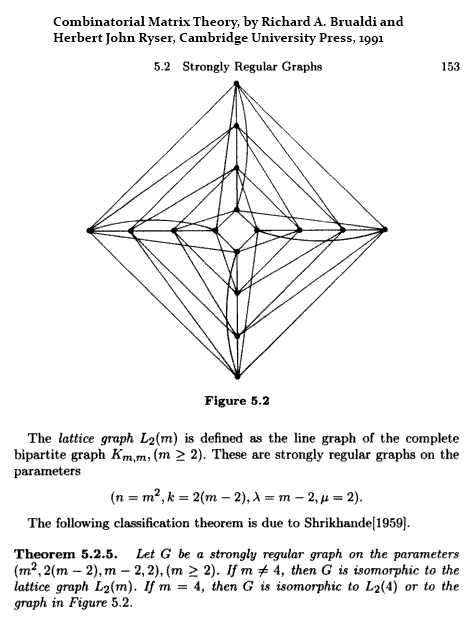From pp. 322 ff. of The Development of Mathematics, by Eric Temple Bell, Second Edition, McGraw-Hill, 1945, at https://archive.org/stream/in.ernet.dli.2015.133966/2015.133966. The-Development-Of-Mathematics-Second-Edition_djvu.txt — Rising to a considerably higher level of difficulty, we may instance what the physicist Maxwell called “Solomon’s seal in space of three dimensions,” the twenty-seven real or imaginary straight lines which lie wholly on the general cubic surface, and the forty-five triple tangent planes to the surface, all so curiously related to the twenty-eight bitangents of the general plane quartic curve. If ever there was a fascinating snarl of interlaced theories, Solomon’s seal is one. Synthetic and analytic geometry, the Galois theory of equations, the trisection of hyperelliptic functions, the algebra of invariants and covariants, geometric-algebraic algorithms specially devised to render the tangled configurations of Solomon’s seal more intuitive, the theory of finite groups — all were applied during the second half of the nineteenth century by scores of geometers who sought to break the seal. Some of the most ingenious geometers and algebraists in history returned again and again to this highly special topic. The result of their labors is a theory even richer and more elaborately developed than Klein’s (1884) of the icosahedron. Yet it was said by competent geometers in 1945 that a serious student need never have heard of the twenty-seven lines, the forty-five triple tangent planes, and the twenty-eight bitangents in order to be an accomplished and productive geometer; and it was a fact that few in the younger generation of creative CONTRIBUTIONS FROM GEOMETRY 323 geometers had more than a hazy notion that such a thing as tiie Solomon’s seal of the nineteenth century ever existed. Those rvho could recall from personal experience the last glow of living appreciation that lighted this obsolescent master- piece of geometry and others in the same fading tradition looked back with regret on the dying past, and wished that mathe- matical progress were not always so ruthless as it is. They also sympathized with those who still found the modern geometry of the triangle and the circle worth cultivating. For the differ- ence between the geometry of the twenty-seven lines and that of, say, Tucker, Lemoine, and Brocard circles, is one of degree, not of kind. The geometers of the twentieth century long since piously removed all these treasures to the museum of geometry, where the dust of history quickly dimmed their luster. For those who may be interested in the unstable esthetics rather than the vitality of geometry, we cite a concise modern account1 (exclusive of the connection with hyperclliptic func- tions) of Solomon’s seal. The twenty-seven lines were discovered in 1849 by Cayley and G. Salmon2 (1819-1904, Ireland); the application of transcendental methods originated in Jordan’s work (1869-70) on groups and algebraic equations. Finally, in the 1870’s L. Cremona (1830-1903), founder of the Italian school of geometers, observed a simple connection between the twenty-one distinct straight lines which lie on a cubic surface with a node and the ‘cat’s cradle’ configuration of fifteen straight lines obtained by joining six points on a conic in all possible ways. The ‘mystic hexagram’ of Pascal and its dual (1806) in C. J. Brianchon’s (1783-1864, French) theorem were thus related to Solomon’s seal; and the seventeenth century met the nineteenth in the simple, uniform deduc- tion of the geometry of the plane configuration from that of a corresponding configuration in space by the method of projection. The technique here had an element of generality that was to prove extremely powerful in the discovery and proof of cor- related theorems by projection from space of a given number of dimensions onto a space of lower dimensions. Before Cremona applied this technique to the complete Pascal hexagon, his countryman G. Veronese had investigated the Pascal configura- tion at great length by the methods of plane geometry, as had also several others, including Steiner, Cayley, Salmon, and Kirkman. All of these men were geometers of great talent; 324 THE DEVELOPMENT OF MATHEMATICS Cremona’s flash of intuition illuminated the massed details of all his predecessors and disclosed their simple connections. That enthusiasm for this highly polished masterwork of classical geometry is by no means extinct is evident from the appearance as late as 1942 of an exhaustive monograph (xi + 180 pages) by B. Segre (Italian, England) on The nonsingular cubic surface. Solomon’s seal is here displayed in all its “complicated and many-sided symmetry” — in Cayley’s phrase — as never before. The exhaustive enumeration of special configurations provides an unsurpassed training ground or ‘boot camp’ for any who may wish to strengthen their intuition in space of three dimensions. The principle of continuity, ably seconded by the method of degeneration, consistently applied, unifies the multi- tude of details inherent in the twenty-seven lines, giving the luxuriant confusion an elusive coherence which was lacking in earlier attempts to “bind the sweet influences” of the thirty- six possible double sixes (or ‘double sixers,’ as they were once called) into five types of possible real cubic surfaces, containing respectively 27, 15, 7, 3, 3 real lines. A double six is two sextuples of skew lines such that each line of one is skew to precisely one corresponding line of the other. A more modern touch appears in the topology of these five species. Except for one of the three-line surfaces, all are closed, connected manifolds, while the other three-line is two connected pieces, of which only one is ovoid, and the real lines of the surface are on this second piece. The decompositions of the nonovoid piece into generalized polyhedra by the real lines of the surface are painstakingly classified with respect to their number of faces and other char- acteristics suggested by the lines. The nonovoid piece of one three-line surface is homeomorphic to the real projective plane, as also is the other three-line surface. The topological interlude gives way to a more classical theme in space of three dimensions, which analyzes the group in the complex domain of the twenty- seven lines geometrically, either through the intricacies of the thirty-six double sixes, or through the forty triads of com- plementary Steiner sets. A Steiner set of nine lines is three sets of three such that each line of one set is incident with precisely two lines of each other set. The geometrical significance of permutability of operations in the group is rather more com- plicated than its algebraic equivalent. The group is of order 51840. There is an involutorial transformation in the group for each double six; the transformation permutes corresponding CONTRIBUTIONS FROM GEOMETRY 325 lines of the complementary sets of six of the double six, and leaves each of the remaining fifteen lines invariant. If the double sixes corresponding to two such transformations have four common lines, the transformations are permutable. If the transformations are not permutable, the corresponding double sixes have six common lines, and the remaining twelve lines form a third double six. Although the geometry of the situation may be perspicuous to those gifted with visual imagination, others find the underlying algebraic identities, among even so impressive a number of group operations as 51840, somewhat easier to see through. But this difference is merely one of ac- quired taste or natural capacity, and there is no arguing about it. However, it may be remembered that some of this scintillating pure geometry was subsequent, not antecedent, to many a dreary page of laborious algebra. The group of the twenty- seven lines alone has a somewhat forbidding literature in the tradition of the late nineteenth and early twentieth centuries which but few longer read, much less appreciate. So long as geometry — of a rather antiquated kind, it may be — can clothe the outcome of intricate calculations in visualizable form, the Solomon’s seal of the nineteenth century will attract its de- votees, and so with other famous classics of the geometric imagination. But in the meantime, the continually advancing front of creative geometry will have moved on to unexplored territory of fresher and perhaps wider interest. The world some- times has sufficient reason to be weary of the past in mathe- matics as in everything else. |
See as well a figure from yesterday's Matrix Geometry post —




























